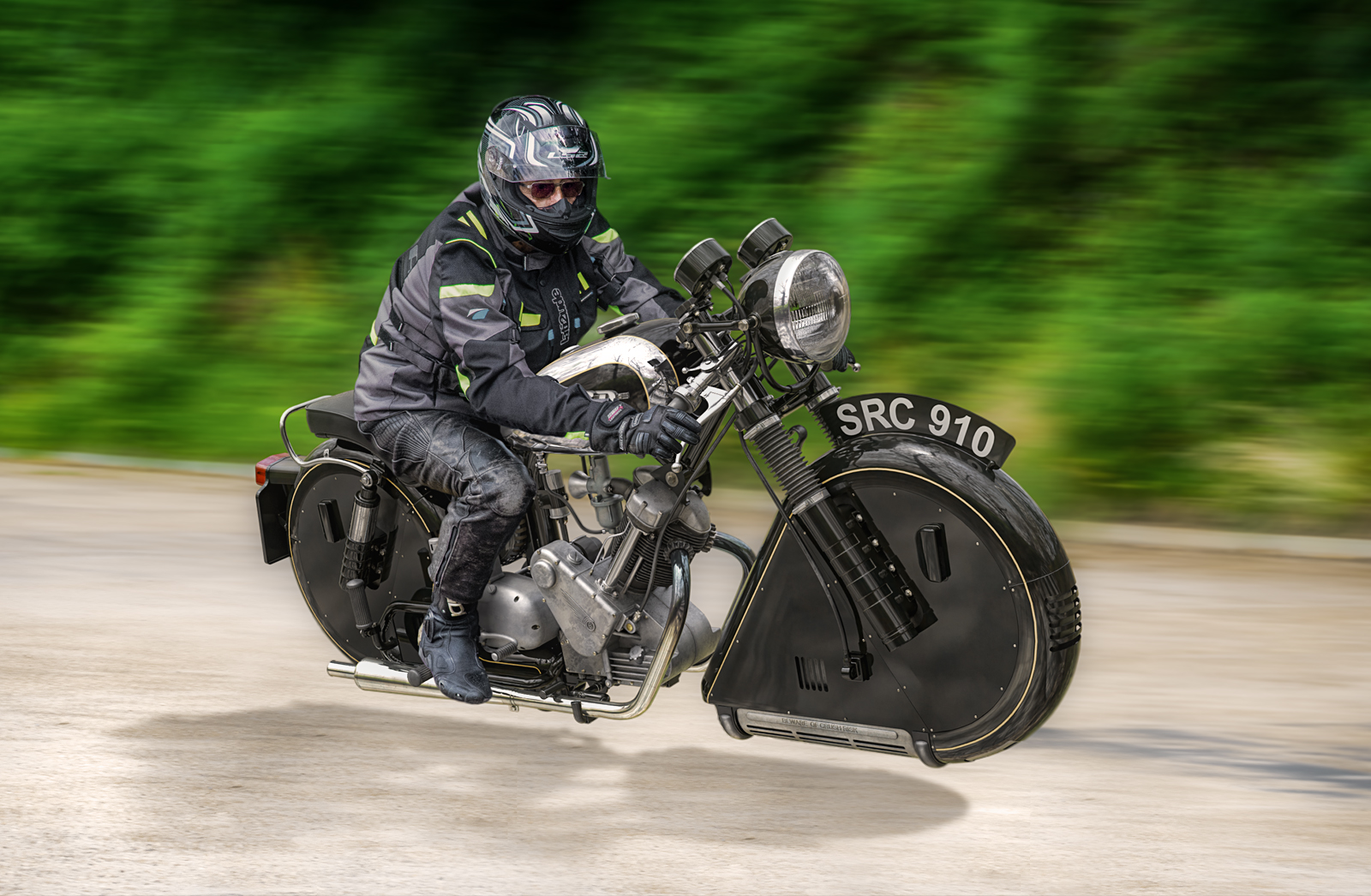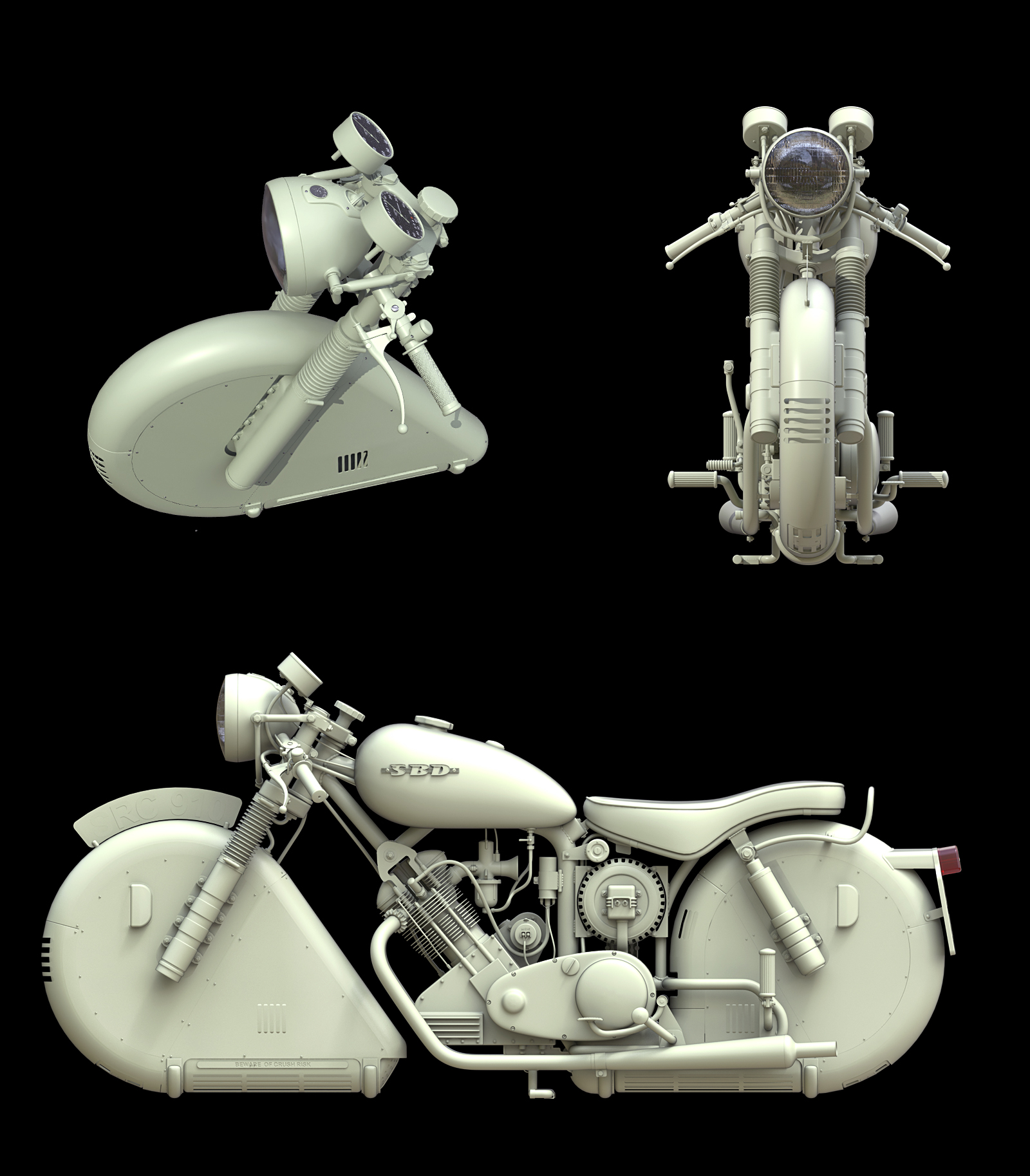SBD Industries K9/600 "Flyer"

SBD Industries had been created in the early 1930’s in order to hold and control the interests of several businesses that incorporated the electrical levitation and EMFEM weight compensation technology designed and created by Aero Electric Ltd.
Although operating in several diverse markets SBD had had little involvement in Aero Cycle manufacture prior to the 1950’s but in late 1949 SBI appointed a chief designer for its new Aero cycle Division: Mr Ernest Mills.
Mills career had seen him employed by some of the giants of UK traction and Aero cycle manufacturers. He received much acclaim for his development of the Isle of Man TT winning Norton Aviator Aero Cycle which had made him one of the leading industry designers.
Norton, like most other manufacturers used lift generation and traction field technology licensed from Aero Electric Ltd. In order for Mills to continue his successes he needed to stop being limited by off the shelf technology and be able to influence development directly where he could and so he approached SBD who snapped him up.
Mills wanted to develop a machine to rival the Norton Aviator and envisaged a light frame with a light yet powerful engine coupled to a very high output power generator. In addition Mills also intended that EL, EMFEM and traction field generator should occupy an area not bigger than a conventional traction cycle wheel area.
It was a tall order but Mills was aware that SBI had developed a line of small light weight super high output power generators known as the K series. These units had great potential for Aero cycles but this application had not been considered at the time of the initial development and the K series project was shelved.
Some 6 months after the appointment of Mills and under his encouragement, SBD Industries purchased Phelon & Moore Ltd. P&M produced a line of motorcycles under the “Panther” name but in particular they produced a very capable and light weight single cylinder engine.
Mills took an improved P&M 40 degree sloping engine which was also a stressed member of the frame and coupled it to a K6 series generator. The very high output of the K series generator allowed for smaller field generators which in turn received a boost from a new generation of Tcoil power conditioners which were also smaller and light weight thus allowing the energy train placement within a conventional wheel area both front and rear.
And so in Spring 1960 the first SBI K6/500 was in production followed by the K7 the following year.
Aero cycle sales had gone ballistic in the late 50’s early 1960’s with cost reductions and the introduction of hire purchase payments now available making ownership much easier. By the early 1960’s sales had overtaken conventional traction based cycles with many new and second hand machines being snapped up by members of the growing Rocker subculture.
Rocker, Ton up boy, greaser – call them what you will but one thing was a constant: the need for speed. To satisfy that need you had to have a Café Racer, an aero cycle modified for speed with drop handlebars, rear sets and a power delivery train tuned to perfection.
There were the dream machines of course: The Bonneville Electric, The previously mentioned Norton Aviator and of course the BSA flying Gold Star but there was another machine, the ultimate machine drooled over by the many but owned only by the few.
For 1963 SBI Aero cycles under the guidance of Ernest Mills took the bold decision to incorporate all the mods that were done in garages and sheds across the land and incorporate them into one highly tuned machine: The SBI K9/600 “flyer”
Of course the Rockers never referred to it as the “Flyer”. To them and to this day the K9 is known as The Dog but then I would say that wouldn’t I.

Not sure about this one. Represents a renovated "Dog" as owned and operated by Brooklands Museum, Weybridge.

That might be the last for the year as my mojo blues seem to be stronger than ever so just to depress you I'll wish you all a happy Christmas now :)